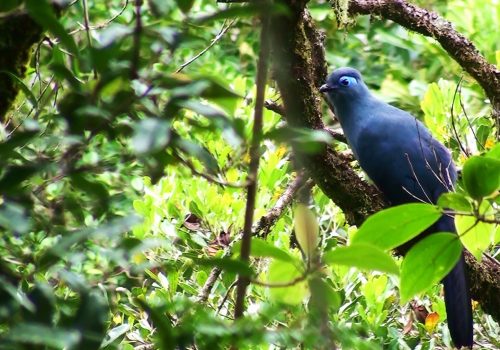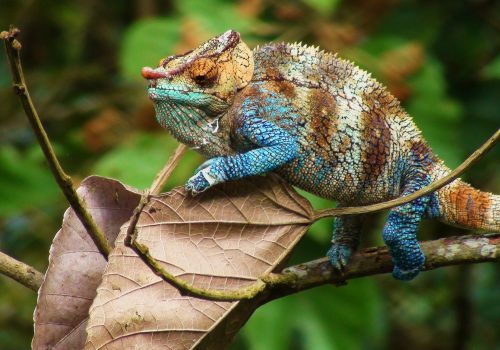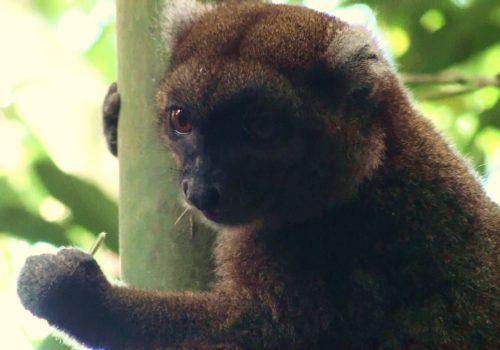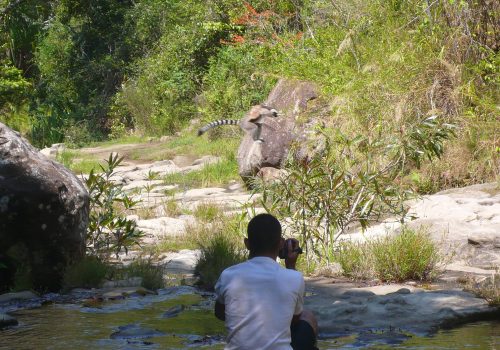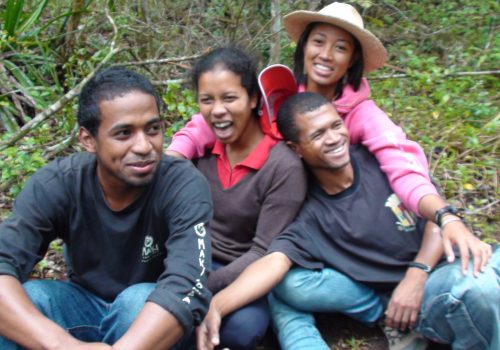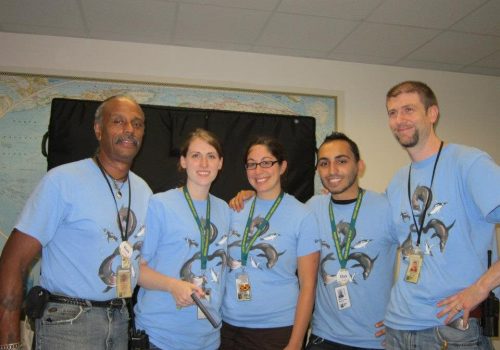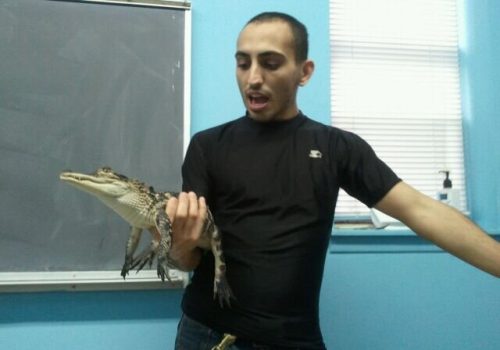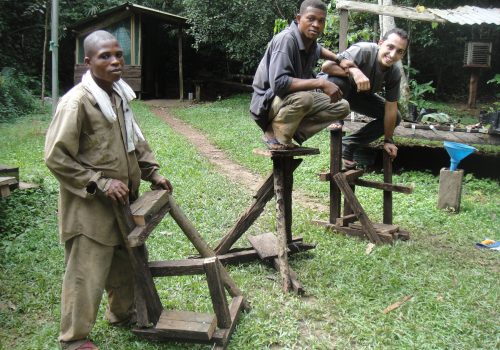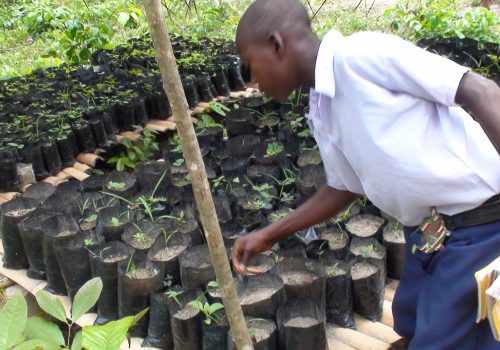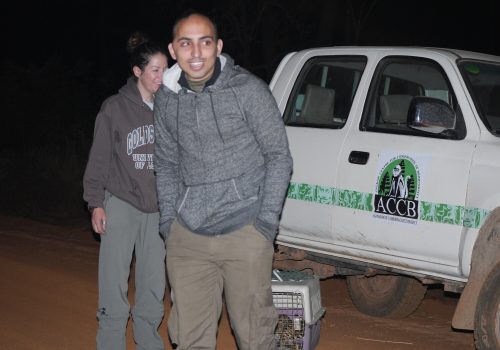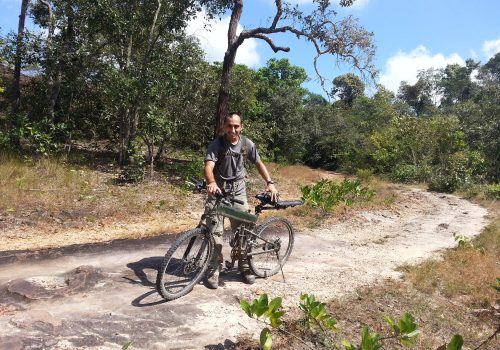Biography
The Formative Years
I’ve been a nature nerd since I was young. Adventures in the great outdoors are my favorite early memories. I grew up in New York City, where The Central Park Zoo, the Museum of Natural History and the Bronx Zoo were some of my favorite haunts. Learning about wildlife through observation and exploration came naturally to me.
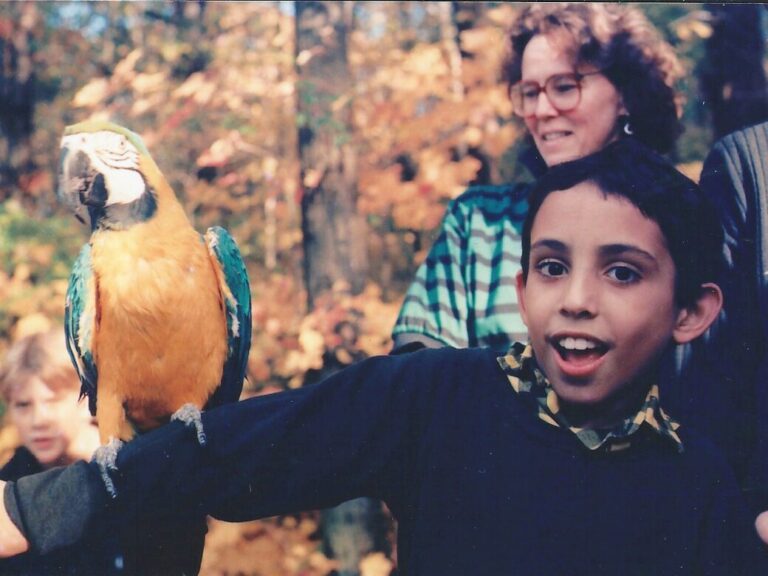
Madagascar
(2008 - 2010)
Discovering Anthropology
I re-discovered a passion for nature and science during my first year at Stony Brook University. The momment I walked into the anthropology lab to get hands on with models of early human ancestors, I was hooked. At Stony Brook I settled into two primary interests, physical anthropology and archaeology. Exploring humans and our evolution, our connections to extinct ancestors and our relation to non-human primates living today, both physically and behaviorally, is something I find fascinating. I had the pleasure of studying under remarkable professors including Richard Leakey, John Shea, Diane Doran-Sheehy and Patricia Wright.
In my junior year I joined a study abroad program in Madagascar with Dr. Patricia Wright at Centre ValBio, a research station she had helped setup. Madagascar is an incredible island. Most vertebrates there are endemic, meaning they do not live anywhere else on Earth. The island is an evolutionary wonderland. Creatures here have evolved in isolation, away from many of the pressures found elsewhere. As the only primates on the island, lemurs evolved to fill niches occupied by other animals. There are woodpecker lemurs. There are pollinating lemurs. There are hibernating lemurs. There are nocturnal lemurs. There are over a hundred lemur species, each one unique in its own way. And many of them, and the other animals that live here, are under threat. The island is also home to a host of other amazing creatures, from fabulous birds and amphibians to a great diversity of chameleons.
Today, illegal logging and the spread of agriculture have decimated 90% of the primary forests. This is leading to widespread erosion, as the unstable tropical soils are washed away into the Indian Ocean. Much of the island is now covered with red erosion sinkholes called “lavaka,” and from space, you can see the island bleeding its red interior into the sea, giving the island its new name, “Nosy Maina” the Red Island.
Over the 4-month study abroad program, students were given the chance to carry out a short research project. However having previous completed my course credits in primate research through a program carried out with WCS Bronx Zoo, I was asked by Dr. Wright to use that part of the course to produce an educational film. The film was titled “Nosy Maitso” meaning Green Island, and was narrated entirely in the local language to make it more applicable for local audiences. The education team at Centre ValBio has been using the film ever since to further their work and inspire audiences all around the national park, and in 2011 the film won an award for conservation from the International Wildlife Film Festival in Montana. This was my first introduction to media and visual communication as a tool to reach and inspire local audiences to love and care for their natural environment.
After graduation I returned to Madagascar once again to work for Dr. Pat Wright’s as a TA for the undergraduate program. After the students left I remained there for 3 more months to do some research assistant work. My time in Madagascar set me on a path that I could not escape. Nature is vanishing everywhere on Earth, and it needs all the attention it can get.
WCS Bronx Zoo
(2010-2011)
Training in Environmental Education
Returning from Madagascar I secured a fellowship position with WCS’s Environmental Education department at the Bronx Zoo. This was my first experience teaching young students about nature. Having previously taught only at the university level, this was a challenge for me. I learned from some of the best environmental educators in the world about the importance of inquiry and discovery-based learning. Students learn by doing and exploring themselves, rather than by being told. Through hands-on activities and a commitment to high-quality teaching materials, media and methods, our lessons have a greater impact.
Working with wild animals was not new to me. I spent many years throughout my high-school and university years volunteering at wildlife rescue centers. However, this was the first time I worked with exotic species from around the world, from porcupines to kinkajous and so much more. These ambassador animals provided a unique form of learning to our students, many that may never get the chance to travel and experience wildlife in their natural habitats. These first-hand interactions made all the difference in the world. These experiences connect students from New York City with wild animals and wild places all around the world.
Nigeria
(2011-2012)
Back to the Jungle
In late 2011, I traveled to Cross River State in Nigeria, where I worked for a primate rescue and research center in the middle of the jungle. There I helped developed an eco-club curriculum for the local schools, assisted with various ongoing primate research projects and biodiversity surveys, contributed GIS survey data and surveillance for illegal logging operations and even helped jump start a community tree nursery and reforestation program.
The star primate of the area was the red-capped mangabey (Cercocebus torquatus). Our NGO had over 50 of these beautiful monkeys living in a large open-top pre-release enclosure, a facility designed to train them for life back in the wild after years in human captivity. This vulnerable species is in rapid decline as a result of poaching and habitat loss. Our environmental education programs aimed to create a local populous that was sensitive to the plight of these rare creatures, and concerned for their survival in the wild. Working with my local educators, I developed a new set of programs and curriculum materials on the negative impacts of bushmeat consumption, zoonotic disease transmission, forest ecology and the intrinsic benefits of healthy natural ecosystems. Our students took up the call and helped organize community clean ups, designed their own educational sign boards, posters, and even held public awareness events. In the end, our students and their parents planted over 10,000 new seedlings in the nearby community forest.
Before building the nursery I spent many days atop the highest branches of trees to study their fruits. In my spare time I assisted the animal keepers with enrichment protocols and enclosure features for our guenons and mangabeys. I also helped with other ongoing research projects and got super excited about developing very fancy Excel dashboards for better data collection and analysis.
Nigeria was a challenging and wonderful country, filled with music, dance, and rich culture. Wildlife there is still facing numerous challenges today. Large oil companies are causing havoc along the Delta, where local ecosystems and the people that depend upon them are being devastated by leaks and spills, and receiving no compensation for the exploitation of their natural resources. This has left traditional fishing communities with no economy, no support, and few means of escaping the damage caused by our consumption of fossil fuels. Labeled kidnappers and terrorists, many youth in the region are left with little choice but to take up arms against a government that ignores and suppresses them violently, and an international community that turns a blind eye to the genocides committed against them in return for cheap, crude oil.
Heavy sigh.
Cambodia
(2013-2015)
The Wildlife Rescue Center
After Nigeria I headed to Cambodia to work as Education & Communications Manager for ACCB, a wildlife rescue center located about an hour north of Angkor Wat. The center was home to hundreds of animals rescued from the illegal pet trade, or donated by concerned locals. There I helped oversee the development of new environmental education and training programs including a new eco-club, a teacher training program, ranger training program, monk training program and a community outreach campaign. I overhauled the tours, worked with marketing and travel agencies to increase visitors to the center, and developed a set of new marketing materials. On site, I was the resident computer nerd, finally bringing high-speed internet to our office, along with new financial management tracking systems, task management systems and streamlined workflow protocols. Tapping into my experience with animal rescue and rehabilitation, I also assisted the rescue teams with various animal rescues.
Because I am a giant science nerd at heart, I love data. As such, I developed a comprehensive monitoring & evaluation system for the new education programs I was running at ACCB. Each new campaign was tested for its effectiveness in meeting our learning goals. Using pre and post questionnaires, surveys, structured and unstructured interviews, we built up thousands of data points over the year. Four different studies were carried out on our eco-club program, teacher training program, monk training program and community outreach program. I designed the M&E to find particular areas that needed improvement, which would allow us to address the problems in future revisions. Overall results showed statistically significant improvements in the knowledge of wildlife and conservation topics, and showed a positive shift in audience attitudes towards nature across the board. I presented the results of my study at the 2014 IPS Congress in Hanoi, Vietnam.
Non-profits and conservation researchers alike often face enormous pressure to have “successful” results due to fears of losing funding. But data is king, and all data tells a story. While there were plenty of exciting results from my work, the data showed huge underlying problems with the work being carried out in the area, problems that I was happy to point out as failures of our efforts. Only by identifying and acknowledging our failures can we hope to address and solve the problems in conservation. The talk was well received by my fellow scientists. Less so by our Board of Directors.
Data will out!
My time here helped me refine my focus. I believe that building knowledge and attitudes is a critical first step in conservation. Using education, art, hands on exploration and discovery can help students learn and become passionate about nature and conservation. People protect what they love, but love only what they know and understand. As such, my life’s mission has become to help provide the knowledge and attitudes needed for conservational to take hold. To me, this is a vital foundation required to build the public and political will needed for conservation to have any hope. It is also an area that many conservation organizations underfund. Discovery, education and media are key to building a better world for people and wildlife.
Fauna In Focus
(2015-2020)
Nature Discovery, Environmental Education & Wildlife Media
With this trifecta, I believe we can build a more informed and engaged public that will demand real action on climate change, wildlife conservation and the preservation of the natural world. I started Fauna in Focus because I saw a desperate need for a project like this, something that would not only be critical for Cambodia but for many biodiversity hotspots around the world. In many of the most biodiverse regions on Earth, public awareness of and engagement with conservation is desperately lacking. The subject isn’t covered well in school and there is little exposure to wildlife, nature or conservation through the media. In Cambodia for example, there are no science centers, natural history museums, no nature centers and no TV channels dedicated to nature.
Fauna in Focus set out to change that with our three pronged approach to conservation. Our pilot project in Cambodia set out to test our ideas in each area of work: Nature Discovery, Environmental Education and Wildlife Media. We began with a project in media, as this would be a cheap and simple way to reach a big audience and kick-start our brand.
A Cambodian Nature Film took two years to produce, and I shot most of the film myself. We had some support from my good friend and incredible filmmaker Oyen Rodriguez, and we received some of the best ibis footage in the world from the incredible Allan Michaud. I self-funded most of the production., and the film premiered in early 2017. Since its release it has reached over 3 million people, has been aired on local TV channels hundreds of times, has been licensed for use by dozens of schools, NGOs and universities, and was featured in the 2018 Cambodian International Film Festival. It was the first and is still today, the only feature-length wildlife conservation documentary made for Cambodian audiences in their language. In 2018 we also partnered with BirdLife International to produce a short, 3-part film on the vulnerable Sarus Crane. This film was released online, and is used by BirdLife International in Cambodia. Today, The Sarus Crane Film has over 400,000 views, and is also shared with dozens of schools and universities. Finally, in 2020, we released “Our Only Home”, Cambodia’s first film about climate change.
For our pilot programs in environmental education, we set out to develop the best wildlife science curriculum in Cambodia. The program included 10 lessons, each 2 hours in length. We built the lessons from scratch, with a big focus on interactive media, fun and engaging activities, and high-quality teaching resources. The whole idea was to have a killer set of program resources that we could adapt to audiences of different ages and backgrounds. Thus, the Wildlife Club was born. We piloted versions of this program with primary, secondary, high school and even university students from 2016 – 2019. In 2020 we developed a training workshop for young conservation professionals. Every program included hands-on learning activities, field-based expeditions to bring students out into nature, and advanced wildlife science learning. Over our pilot program we reached more than 10,000 students with some of the best environmental education and training in the region.
While students learn about nature best by going out to experience it first hand, it is risky, time-consuming and expensive. When you can’t bring people to nature, bring nature to people. In 2018, I began our most ambitious project of all, designing and opening Cambodia’s first Nature Discovery Center. This pilot facility aimed to showcase what we could do with our miniscule budget, tiny team and volunteer support. We opened in January of 2019 to enormous success. The center featured interactive touchscreen challenges, media displays, hands-on learning stations and dioramas and even a small Jungle Lab Classroom. Just outside, our learning garden featured a mini nature trail and organic farm. In 2020, with support from HUMY, we added a Tree Nursery & Forest Restoration Program where were researched and grew IUCN threatened tree species native to Cambodia.
Sadly, as a result of a serious lack of funding due to the COVID 19 pandemic, Fauna in Focus Cambodia was shut down. The future of Fauna in Focus is now uncertain, though we are continuing to struggle along by partnering with larger NGOs and assisting with the development of digital learning resources for Duke Lemur Center (Duke University) and Centre ValBio (Stony Brook University).
That pretty much catches you up. Hope you enjoyed the rantings and ramblings.
– Stay Curious!
Earthman Dan
